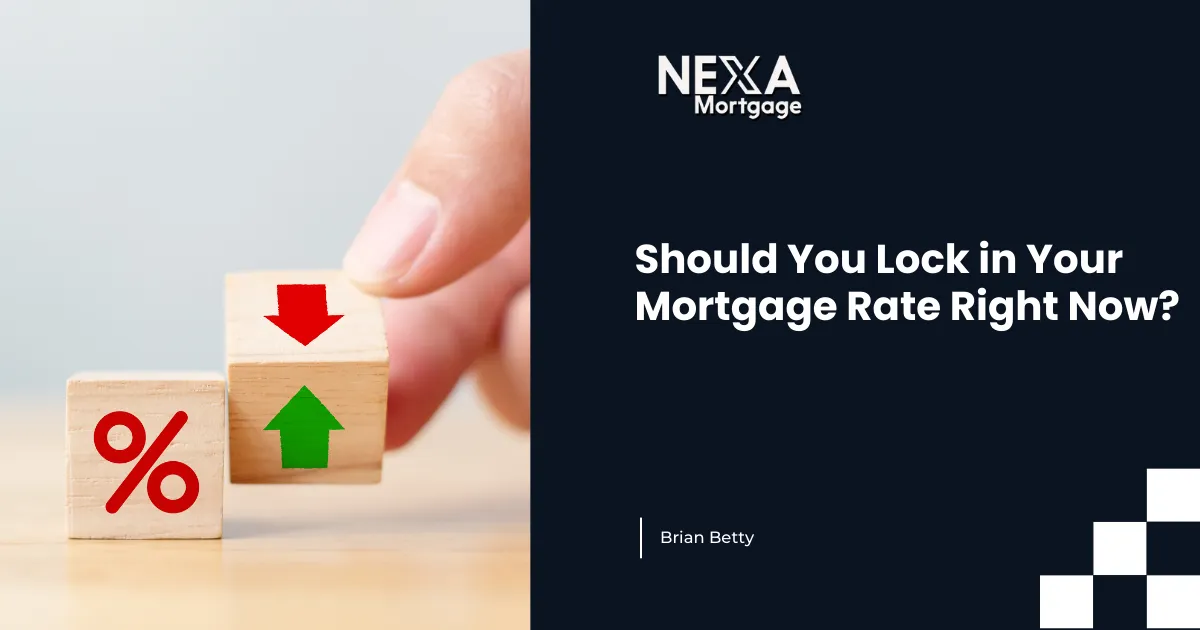
Should You Lock in Your Mortgage Rate Right Now
Understanding the Current Mortgage Rate Climate
Mortgage rates in July 2025 are hovering around 6.72% for a 30-year fixed loan, reflecting a modest increase after several weeks of declines. While the Federal Reserve has not raised interest rates recently, markets remain jittery as investors watch for new inflation and employment data that could sway rate trends.
Mortgage rates tend to move quickly in response to economic news, and volatility has become the norm. With inflation pressures still a concern and the Fed maintaining a cautious tone, the path forward is uncertain. That makes deciding whether to lock your rate now or wait a strategic financial decision.
Reasons to Lock in Your Rate Now
Avoid Future Rate Hikes
Mortgage rates can spike with little warning, often tied to sudden shifts in economic outlooks or unexpected inflation data. Locking in now can offer peace of mind and protection against a sudden upward move that could cost you thousands over the life of your loan.Rate Forecasts Remain Conservative
Leading economists forecast only slight declines in mortgage rates over the next year. Fannie Mae, for example, expects rates to drift down toward 6.1% by mid-2026. However, those gradual reductions may not align with your buying timeline. If you're planning to purchase soon, locking now could be the safer bet.Limited Inventory Could Drive Prices Higher
Many homeowners are holding onto ultra-low mortgage rates secured during the pandemic, contributing to limited housing supply. This "lock-in effect" is keeping home prices elevated. If you find a home that fits your needs and budget, locking your rate can help you act quickly without waiting for an unpredictable drop in rates.
When It Might Pay to Wait
Potential Rate Relief Later in the Year
If inflation eases significantly in the coming months, the Fed may begin cutting interest rates. That could bring mortgage rates down, offering potential savings to buyers who can afford to wait.Leverage ARM Flexibility
Adjustable-rate mortgages (ARMs) typically offer lower initial rates than fixed-rate loans. For buyers who anticipate refinancing within a few years, an ARM could offer short-term savings, with the option to lock in a better fixed rate later.More Time to Shop Around
Even in a high-rate environment, there are differences in pricing between lenders. Taking the time to compare offers can uncover better deals. If you’re not in a rush, shopping around could yield better rates or terms.
Smart Strategies for Locking In
Get Pre-Approved with Multiple Lenders: This gives you a clearer picture of your options and potential bargaining power.
Track Economic Indicators: Inflation reports, employment data, and Fed commentary all impact mortgage rates.
Know Your Budget and Limits: Decide on a rate that keeps your monthly payments manageable.
Ask About Float-Down Options: Some lenders allow you to lock in a rate but still benefit if rates drop before closing.
Bottom Line
If you’re actively shopping for a home, locking in your mortgage rate now—especially if it’s under 6.7%—can help you avoid unwelcome surprises and maintain budget control. However, if your timeline is flexible and you're comfortable watching the market, holding off could yield a lower rate down the road.
Ultimately, rate locks are about balancing timing, risk tolerance, and financial goals. Talking to a knowledgeable loan advisor can help you navigate the decision and secure the most favorable outcome.
Sources
Forbes – https://www.forbes.com
Investopedia – https://www.investopedia.com
CBS News – https://www.cbsnews.com



